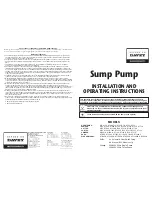
EN1H-1377GE23 R1114 - Translation of original
5
Honeywell GmbH
GB
1.5.6 Consequences and dangers that result from not obser-
ving the manual
• Not observing this manual will lead to loss of the warranty and make
damage claims invalid.
• Failure to observe the manual can lead, for example, to the following
dangers:
- Hazard to persons caused by electrical, thermal, mechanical, and
chemical influences
- Loss of important product functions
- Failure to perform required maintenance and service measures
- Environmental hazard caused by leakage of hazardous substances
1.6 Basic Safety Measures
1.6.1 Keep information available
This manual has to be stored. It has to be ensured that all persons who
operate the compact booster unit have access to the manual at all times.
1.6.2 For environmental protection
1.6.3 Modifications to the compact booster unit
When using externally procured parts, there is no guarantee that these are
designed and constructed to tolerate demands made upon them or whether
they comply with safety regulations.
For safety reasons, no unauthorised modifications may be made to the
compact booster unit.
Parts and special equipment not delivered by Honeywell are also not autho-
rised by Honeywell for use.
1.7 Duty of due care of the operator
This compact booster unit was designed and constructed according to a risk
assessment and after careful selection of the harmonised standards that
apply, as well as according to further technical specifications. It thus
complies with best practice and guarantees the highest safety standard.
This level of safety can only be attained during operational practice if all
required safety measures have been taken. It is the duty of care of the
operator of the compact booster unit to plan these measures and enforce
their implementation.
In particular, the operator must ensure that
• the compact booster unit is only operated as intended
• the compact booster unit is only operated in perfect working condition.
• the manual has to be kept legible at all times and stored on-site with the
compact booster unit.
• the compact booster unit is assembled, commissioned, maintained, and
shut down solely by sufficiently qualified and authorised personnel.
• this personnel is regularly instructed on all relevant questions of work
safety and environmental protection, and has also read and understood
the manual and particularly the safety instructions it contains.
• none of the safety and warning signs attached to the compact booster unit
are removed and all remain legible.
• a hazard assessment (according to the Safety at Work Act § 5) is
conducted to detect further hazards that may arise from the particular
working conditions on-site where the compact booster unit is operated.
• all further information and safety instructions which arise from the hazard
assessment process shall be summarised in operating instructions
(according to the work equipment regulation § 6).
• the drain output lines are sufficiently dimensioned
1.8 Safety instructions for the operator/operating personnel
• Eliminate hazards caused by electrical energy (for details refer to the
country specific regulations and/or local power supply companies).
1.9 Safety instructions for maintenance, inspections and
assembly work
• Alterations or modifications of the system are only permitted with the
consent of the manufacturer.
• Use only original parts or parts authorised by the manufacturer.
• Use of parts other than those authorised may lead to loss of liability for
any damage they may cause.
• Perform service on the system only when the machine is off.
• The pump housing has to be at ambient temperature.
• The pump housing has to be depressurised and empty.
• The procedures described in the manual for shutting down the system
have to be observed under all circumstances.
• Reinstall safety equipment and protective devices and activate them
again immediately after work on the system has been completed. Before
starting up again, observe the start-up checklist.
• Keep unauthorised persons (e.g. children) away from the system.
1.10Requirements for operating personnel
1.10.1 Operating personnel
This compact booster system may only be asembled, started, maintained,
and shut down by persons who have been trained, instructed and authorised
to do so.
In some cases, training can be arranged by the manufacturer if asked by the
operator.
Training or personnel to operate system may only be conducted under the
supervision of specialised technicians.
The relevant authorisations of the personnel are to be specified by the
operating company in the form of an operating instruction.
Over and above this, special qualifications are required for the following
tasks:
• Only electricians may perform work on electrical equipment.
• Assembly, maintenance, servicing and repair work may only be
performed by qualified, specialist personnel
The basic regulations on work safety and accident prevention are to be
observed.
1.10.1.1Qualified personnel
Qualified personnel are persons who on account of their training, experience
and instruction also their knowledge of the relevant norms, regulations, acci-
dent prevention regulations and operating conditions, including those
persons responsible for the safety of the system, have been authorised to
perform the relevant and required tasks, meanwhile being able to recognise
and avoid dangers. This includes required knowledge of First Aid measures
and the local ambulance services and facilities.
1.11Personal safety equipment
No personal safety equipment is required to operate the compact booster
unit.
When operating or servicing the compact booster unit, the regulations
concerning waste avoidance and the proper recycling or disposal of wa-
ste must be observed.
Particular attention must be paid that materials and agents dangerous
to the groundwater such as fats, oils, coolants, solvent-based liquid de-
tergents, etc. do not pollute the ground or access the sewage system.
These materials must be caught in suitable tanks, stored, transported
and properly disposed of.






































